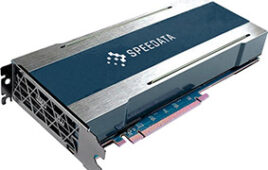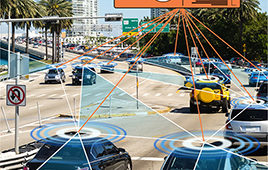 When you need to test hardware designed to operate in the vast reaches of space, you start in a vacuum chamber. NASA’s Glenn Research Center in Cleveland has many of them, but Vacuum Chamber 5 (VF-5) is special. Supporting the testing of electric propulsion and power systems, VF-5 has the highest pumping speed of any electric propulsion test facility in the world, which is important in maintaining a continuous space-like environment.
When you need to test hardware designed to operate in the vast reaches of space, you start in a vacuum chamber. NASA’s Glenn Research Center in Cleveland has many of them, but Vacuum Chamber 5 (VF-5) is special. Supporting the testing of electric propulsion and power systems, VF-5 has the highest pumping speed of any electric propulsion test facility in the world, which is important in maintaining a continuous space-like environment.
The cryogenic panels at the top and back of the chamber house a helium-cooled panel that reaches near-absolute-zero temperatures (about -440 degrees Fahrenheit). The extreme cold of this panel freezes any air left in the chamber and quickly freezes the thruster exhaust, allowing the chamber to maintain a high vacuum environment. The outer chevrons are cooled with liquid nitrogen to shield the cryogenic panels from the room temperature surfaces of the tank.
Most electric propulsion devices, such as Hall Thrusters, use xenon as a propellant, which is very expensive. By capturing the used xenon as ice during testing, researchers are able to recover the propellant to reuse, saving NASA and test customers considerable costs.
The oil diffusion pumps along the bottom of the tank capped by circular covers use a low vapor pressure silicon oil to concentrate small amounts of gas to the point where it can be mechanically pumped from the chamber.
VF-5 will continue to provide a testing environment for Glenn’s advanced Solar Electric Propulsion technology needed for future astronaut expeditions into deep space, including to Mars.




